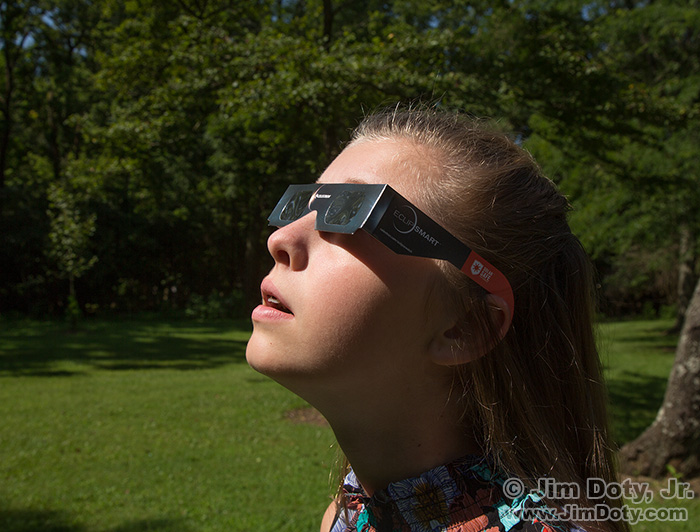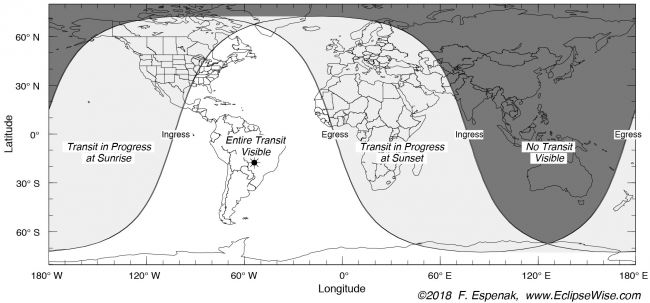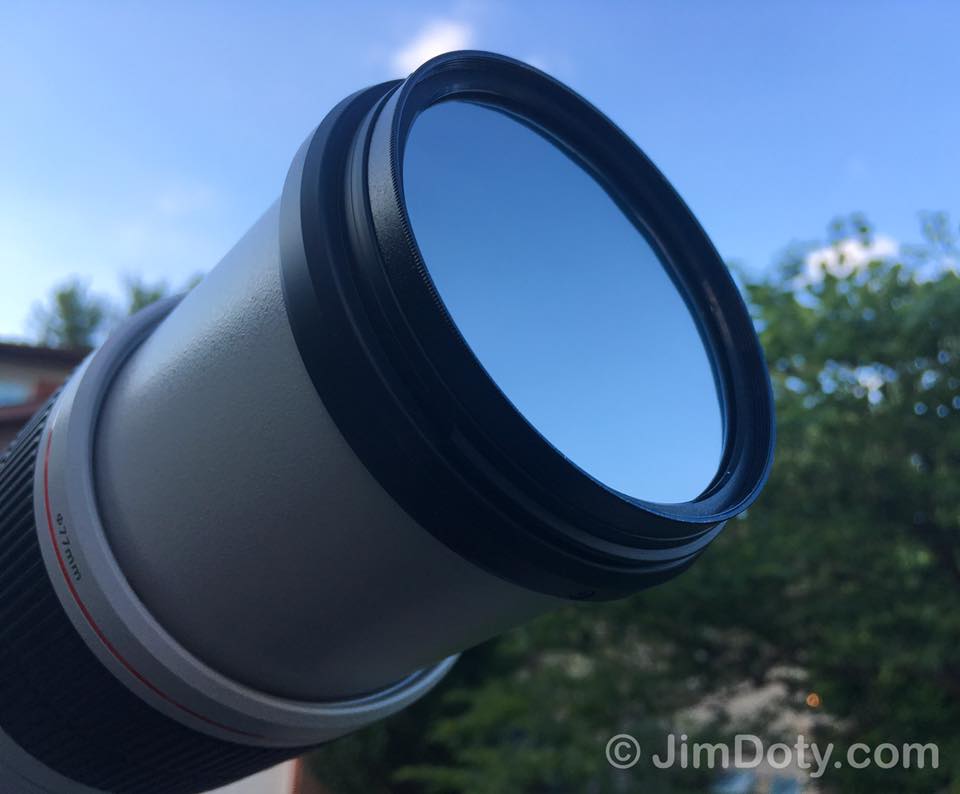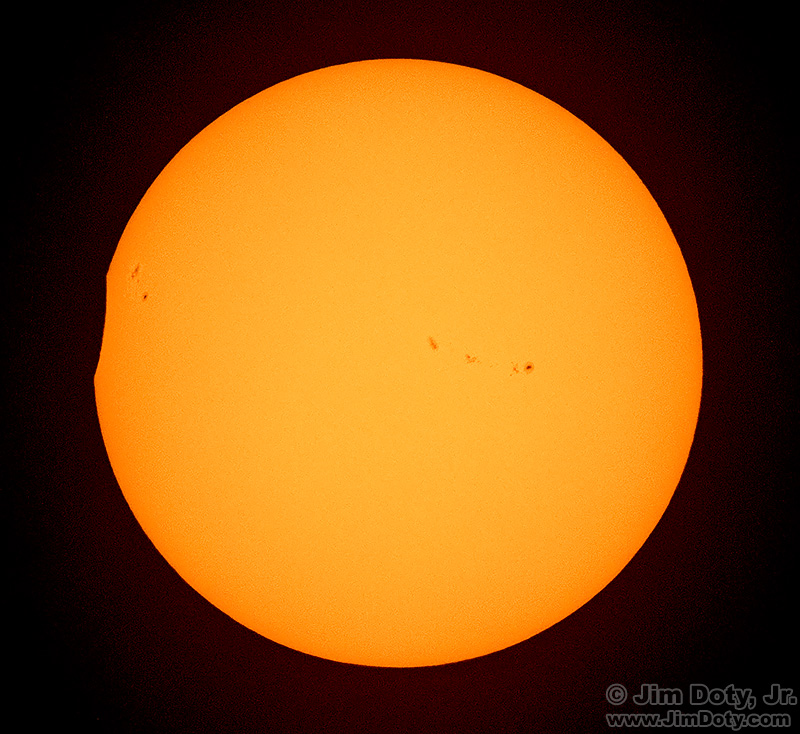
Mercury will transit the sun, Monday, November 11, 2019 from 7:35 am EST (1235 GMT) to 1:04 pm EST (1804 GMT). Don’t miss it! There will not be another transit for 13 years. If you have solar eclipse glasses or solar safe binoculars from 2017’s solar eclipse, you have everything you need to watch the transit.
Watching the Transit
Safely watching or photographing the transit of Mercury is exactly the same as watching and photographing the solar eclipse of 2017 (with the exception of eclipse totality). If you followed my advice back then (links below) just do it all again.
DO NOT USE SOLAR ECLIPSE GLASSES TO LOOK THROUGH NORMAL BINOCULARS! You could blind yourself.Â
DO NOT USE SOLAR ECLIPSE GLASSES TO LOOK THROUGH A CAMERA AND LENS THAT DOES NOT HAVE A WHITE LIGHT SOLAR ECLIPSE FILTER ON THE LENS. You could blind yourself.
Solar eclipse glasses should only be used by themselves. (Don’t worry, the model in the “No!” photos is safe. The binoculars are actually solar binoculars and the telephoto lens has solar filter on it.)
Â
To safely view the transit through binoculars, look only through solar eclipse binoculars or binoculars equipped with a visually safe solar filter.
Several companies make binoculars that are safe for viewing the sun. Celestron is one of them. Celestron uses a filter material that shows the sun as white, not yellow.
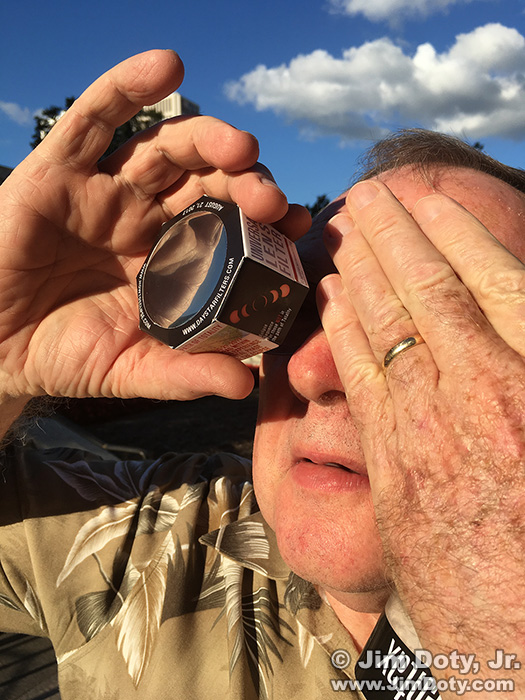
Watching the sun with a cardboard mounted “White Light” solar filter. This filter cam be taped over the end of a small diameter lens, or two of them can be taped over binocular lenses.
Be careful out there. There are high density filters that are safe for photographing the sun but NOT safe for viewing the sun.
Incidentally, that means you can’t look safely through the camera and lens at the sun when one of these high density filters is in place. You have to use alternative focusing methods like “live view” mode. It is complicated and a pain to do. I know, I own one. I prefer “white light” solar filters (more about them later) because they are both visually and photographically safe.
What will the transit look like?
Mercury will be a small black circle on the surface of the sun. Mercury is on the lower left part of the sun is this image.
Transit Visibility
It you live in the eastern United States you can watch the whole transit. For the rest of the country the transit will be already be in process as the sun rises.
Photographing the Transit
You should only photograph the sun with a solar filter on your lens. I prefer a “white light” solar filter.
What is a white light solar filter? It is a solar filter that is safe for both viewing and photographing the sun. It is a specially made, color correct solar filter from Thousand Oaks Optical. The sun looks yellow through a white light solar filter. Other solar photography filters turn the sun white or blue. Since a white light solar filter isn’t more expensive than most other kinds of solar filters, it is far and away my preference.
If you ordered stuff for the eclipse in 2017 and it arrived too late, today is a good day to practice for tomorrow’s transit, especially if you want to do some photography. All my “how to photograph the eclipse” articles are linked below. Just follow the eclipse advice to practice photographing the sun today and photograph the transit tomorrow.
It will be much easier to photograph the transit when the sun is not high in the high. Start doing your photography when the sun is about 20° above the horizon. That is about two “fist widths” when your fist is at arm’s length. FYI, one fist width is roughly 10°.
Here’s hoping for clear skies everywhere tomorrow morning!
LINKS
Mercury Transit 2019: Where and how to see it on November 11 – at Space.com. is a good, basic guide to watching the transit.
Watching the Mercury Transit Safely – articles from my eclipse series
Solar Retinopathy: Why an Eclipse is So Dangerous, Especially for Children, and What To Do About It – This is the most important article in my eclipse series! It is about eye safety.
Safe and Unsafe Uses of Eclipse Glasses and Solar Filter Materials
Are Welding Filters Safe for Viewing the Eclipse?
Do NOT Look at the Eclipse Through a High Density Solar Eclipse Filter! You Could Go Blind!
How Do You Know if Your Eclipse Glasses and Binoculars are Safe?
Mercury Transit Photography – articles from my eclipse series
How To Photograph the Sun (and an Eclipse) with Lee and Other High Density Solar Filters
How to Process a “Blue Sun†Photographed with a Lee Solar Filter
How to Photograph the Sun (and an Eclipse) with a “White Light†Solar Filter
Practice Your Solar Eclipse Photography Skills Now!
Photographing the Eclipse: How Big Do You Like Your Sun?
Solar Filters for Photography

